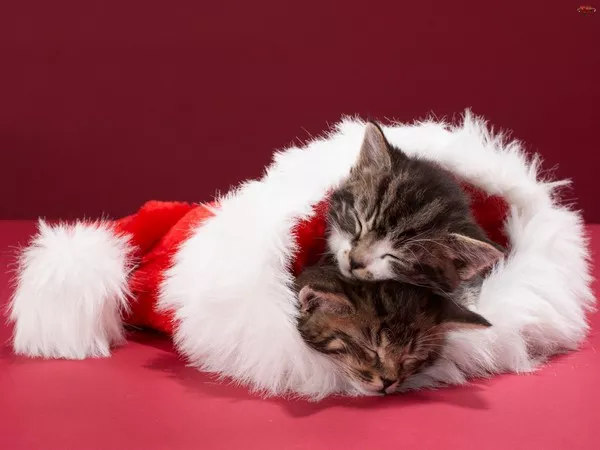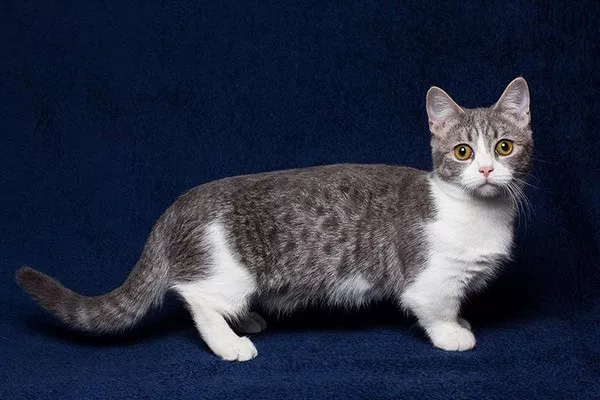Gastroenteritis, characterized by inflammation of the stomach and intestines, is a common condition that can affect both humans and animals, including cats. Pet owners often worry about the transmission of diseases between themselves and their pets, leading to questions about whether cats can contract gastroenteritis from humans. This essay aims to explore the nature of gastroenteritis, its causes, symptoms, and transmission pathways, specifically addressing the potential for cross-species infection. By understanding these aspects, cat owners can better manage their pets’ health and reduce the risk of gastrointestinal illnesses.
Understanding Gastroenteritis
What is Gastroenteritis?
Gastroenteritis refers to the inflammation of the gastrointestinal tract, which includes the stomach and intestines. This condition can lead to a range of symptoms, including:
Diarrhea: Frequent, loose, or watery stools.
Vomiting: The expulsion of stomach contents through the mouth.
Abdominal Pain: Cramping or discomfort in the abdominal area.
Fever: An elevated body temperature, often accompanying infections.
Dehydration: Resulting from fluid loss due to vomiting and diarrhea.
Gastroenteritis can be caused by various factors, including infections, toxins, and dietary indiscretions.
Causes of Gastroenteritis
The causes of gastroenteritis can be broadly categorized into infectious and non-infectious factors.
Infectious Causes
Viruses: Viral gastroenteritis is often caused by pathogens such as norovirus and rotavirus in humans. In cats, common viral causes include feline parvovirus and calicivirus.
Bacteria: Bacterial infections can arise from contaminated food or water. Common bacterial pathogens include Salmonella, E. coli, and Campylobacter.
Parasites: Intestinal parasites, such as Giardia and roundworms, can also lead to gastroenteritis in both humans and cats.
Non-Infectious Causes
Dietary Indiscretion: Ingesting spoiled food, sudden changes in diet, or eating inappropriate items can lead to gastrointestinal upset.
Toxins: Certain plants, chemicals, and medications can be toxic to cats and cause gastrointestinal symptoms.
Underlying Health Issues: Conditions such as pancreatitis, inflammatory bowel disease, or liver disease can also result in gastroenteritis symptoms.
Can Cats Get Gastroenteritis from Humans?
Direct Transmission
The concern about cats contracting gastroenteritis from humans primarily revolves around the infectious agents that cause the condition. The likelihood of direct transmission varies by pathogen:
Viral Infections: Most viruses that cause gastroenteritis in humans, such as norovirus, are species-specific and do not typically infect cats. Conversely, feline-specific viruses, like feline panleukopenia virus, do not infect humans.
Bacterial Infections: Certain bacteria, such as Salmonella and Campylobacter, can be transmitted between species. While it is possible for a cat to contract these infections from contaminated food or surfaces that have come into contact with an infected human, this is not a common pathway.
Parasitic Infections: Some parasites can be transmitted between species, but most gastrointestinal parasites that affect cats are not the same as those that infect humans. For example, Giardia can infect both species, but the strains are often different.
Indirect Transmission
Indirect transmission can occur through contaminated environments or surfaces. Here are some scenarios where this could happen:
Contaminated Surfaces: If a human with gastroenteritis has contact with surfaces (e.g., countertops, utensils) that become contaminated, and then a cat comes into contact with these surfaces, there is a potential risk for transmission of certain pathogens.
Shared Living Spaces: In households where humans and cats share living spaces, the risk of indirect transmission increases, especially if hygiene practices are not maintained.
Food and Water: If a human prepares food for both themselves and their cat without proper handwashing or sanitation, there is a risk of cross-contamination.
Risk Factors for Cats
While the risk of cats contracting gastroenteritis from humans is generally low, certain factors can increase susceptibility:
Immunocompromised Cats: Cats with weakened immune systems, due to age, illness, or medications, may be more susceptible to infections.
Young Kittens: Kittens are particularly vulnerable to gastrointestinal infections due to their developing immune systems.
Environmental Stressors: Stressful environments, such as overcrowding or changes in routine, can compromise a cat’s immune system and increase the risk of illness.
Symptoms of Gastroenteritis in Cats
Recognizing the symptoms of gastroenteritis in cats is crucial for prompt diagnosis and treatment. Common signs include:
Vomiting: Cats may vomit occasionally or frequently, depending on the severity of the condition.
Diarrhea: Loose or watery stools are common, and in severe cases, diarrhea may be accompanied by blood or mucus.
Lethargy: Affected cats may appear tired, weak, or less active than usual.
Loss of Appetite: Gastroenteritis can lead to a decreased desire to eat, resulting in weight loss.
Abdominal Discomfort: Cats may exhibit signs of discomfort, such as hunched posture or sensitivity when their abdomen is touched.
Dehydration: Vomiting and diarrhea can lead to dehydration, which may manifest as dry gums, excessive thirst, and decreased skin elasticity.
Differentiating Gastroenteritis from Other Conditions
It is essential to differentiate gastroenteritis from other conditions that can cause similar symptoms in cats. Common conditions that may mimic gastroenteritis include:
Feline Panleukopenia: This viral infection can cause severe gastrointestinal symptoms and is highly contagious among cats.
Food Allergies or Intolerances: Allergic reactions to certain foods can lead to gastrointestinal upset.
Intestinal Obstruction: Ingesting foreign objects can lead to blockage and similar symptoms.
Bacterial or Parasitic Infections: Other infections can cause gastrointestinal symptoms and may require different treatments.
To ensure an accurate diagnosis, it is essential to consult a veterinarian if you notice any signs of gastrointestinal issues in your cat.
Diagnosis of Gastroenteritis in Cats
When a cat presents with symptoms suggestive of gastroenteritis, a veterinarian will typically follow a systematic approach to diagnose the condition:
Physical Examination
A thorough physical examination is the first step in diagnosing gastroenteritis. The veterinarian will assess the cat’s overall health, check for signs of dehydration, and examine the abdomen for tenderness or distension.
Medical History
The veterinarian will ask about the cat’s medical history, including any previous gastrointestinal issues, recent dietary changes, exposure to other animals, and any known contact with humans who have gastroenteritis.
Diagnostic Tests
Depending on the initial examination, the veterinarian may recommend additional tests, such as:
Blood Tests: Blood work can help assess the cat’s overall health, check for dehydration, and identify any underlying infections or health issues.
Fecal Examination: A stool sample may be analyzed to check for the presence of parasites, bacteria, or other abnormalities.
Imaging: X-rays or ultrasounds may be necessary to evaluate the gastrointestinal tract for obstructions or other abnormalities.
Treatment of Gastroenteritis in Cats
The treatment of gastroenteritis in cats focuses on alleviating symptoms, addressing the underlying cause, and preventing dehydration. Common treatment options include:
Supportive Care
Supportive care is essential for helping a cat recover from gastroenteritis. This may include:
Hydration: Ensuring the cat stays hydrated is critical. In mild cases, oral rehydration solutions may be sufficient. In severe cases, intravenous fluids may be necessary.
Nutritional Support: Once vomiting has subsided, a bland diet may be recommended. Gradually reintroducing food can help the cat regain its strength.
Medications
Depending on the underlying cause, the veterinarian may prescribe various medications, such as:
Antiemetics: Medications to control vomiting can help the cat feel more comfortable and allow for better hydration and nutrition.
Antibiotics: If a bacterial infection is suspected, antibiotics may be prescribed to address the infection.
Antiparasitics: If parasites are identified as the cause, appropriate antiparasitic medications will be administered.
Monitoring and Follow-Up
Regular follow-up visits to the veterinarian are important to monitor the cat’s progress and ensure that the condition is improving. Additional treatments may be necessary if the initial therapy is not effective.
Preventive Measures for Gastroenteritis
Preventing gastroenteritis in cats involves a combination of good hygiene practices, dietary management, and monitoring for signs of illness. Key preventive measures include:
Good Hygiene Practices
Maintaining good hygiene can help prevent the spread of gastrointestinal infections:
Wash Hands: Always wash hands after handling pets, especially if they show signs of gastrointestinal issues.
Clean Living Environment: Regularly clean the cat’s living area to minimize exposure to pathogens.
Monitor for Signs of Illness
Be vigilant in monitoring your cat for any signs of gastrointestinal issues, especially if they have been in contact with other animals or humans with gastroenteritis. Early detection and treatment can help prevent the spread of infection.
Proper Food Handling
Ensure that food is stored and prepared safely to reduce the risk of contamination. Avoid feeding your cat spoiled or inappropriate foods.
Regular Veterinary Check-ups
Routine veterinary visits can help identify health issues early and ensure that vaccinations are up-to-date. Regular check-ups also allow for monitoring of any pre-existing conditions that may predispose a cat to gastrointestinal infections.
The Role of Pet Owners in Managing Cat Health
As a cat owner, you play a crucial role in managing your pet’s health. Here are some key responsibilities:
Observing Changes in Behavior
Pay close attention to any changes in your cat’s behavior, particularly regarding their gastrointestinal health. If you notice signs of vomiting, diarrhea, or lethargy, seek veterinary care promptly.
Educating Yourself
Stay informed about common feline health issues, including gastroenteritis. Understanding the symptoms and treatment options can help you act quickly when health concerns arise.
Providing a Safe Environment
Creating a safe and comfortable environment for your cat can help reduce stress and the risk of gastrointestinal infections. Ensure that your cat’s living space is free from hazards and irritants.
Conclusion
In conclusion, while cats can potentially be affected by gastroenteritis, the risk of them contracting the condition directly from humans is relatively low. Understanding the nature of gastroenteritis, recognizing the symptoms, and seeking prompt veterinary care are essential for managing your cat’s health effectively.
As a responsible cat owner, it is crucial to maintain good hygiene practices, monitor your pet’s health, and provide a safe environment. By staying informed and proactive, you can help protect your feline companion from gastrointestinal illnesses and ensure their overall well-being.
Related topic:



























